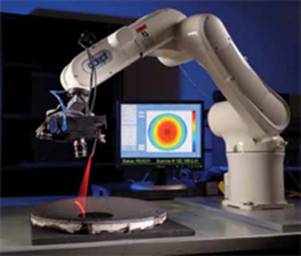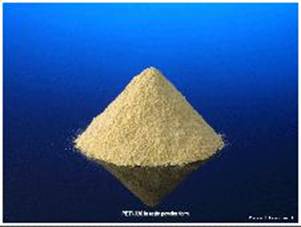


Invention of the Year Awards for 2008
The Government Invention of the Year for 2008 is the High Speed Three-Dimensional Laser Scanner with Real Time Processing, developed at NASA’s Ames Research Center. This scanner has found application in the Mold Impression Laser Tool (MILT), a hand-held instrument used to scan Space Shuttle tiles to detect and measure the amount of any damage. The MILT unit wirelessly transmits flaw dimensions and location information to a laptop computer enabling the operator to easily take measurements up to several meters away without cumbersome cables.
Several MILT instruments are currently in use at the Kennedy Space Center where they provide accurate and reliable tile flaw information for the Shuttle maintenance crews. MILT technology been adapted for other NASA programs, including the Crew Exploration Vehicle (CEV), the Stardust Sample Return Capsule Program, and the Mars and Lunar Rover Programs. It has also been adapted to a robot arm for automated scanning of thermal protection system components.
The Commercial Invention of the Year for 2008 is PETI 330: Composition of and Method for Making High Performance Resins for Infusion and Transfer Molding. PETI-330's flowability allows it to be used to fabricate complex structures for high-temperature applications. The Composition of and Method for Making High Performance Resins for Infusion and Transfer Molding Processes invention has found application in a high-temperature resin known as PETI-330. It is specifically designed for use in the fabrication of composites using low-cost processes such as resin transfer molding, resin infusion, and vacuum assisted resin transfer molding (VARTM).
PETI-330, developed at NASA’s Langley Research Center, is the only commercially available, off the shelf (COTS), high-temperature resin that has both the low and stable melt viscosity required for VARTM processes, and provides high temperature structural mechanical properties in composites. In addition, under license, pre-impregnated carbon fiber tape products are being manufactured intended specifically for airframe and jet engine applications.
Software of the Year Award for 2008
The Optimal Trajectories by Implicit Simulation program version 4 (OTIS4), developed at NASA’s Glenn Research Center, is used to perform trajectory performance studies based on many variables to determine the best trajectory for a given mission. A user can simulate a wide variety of vehicles such as aircraft, missiles, reentry vehicles, hypervelocity vehicles, satellites, and interplanetary vehicles. The vehicle models used in OTIS4 are defined by user inputs; there are no embedded, vehicle-specific aerodynamic or propulsion models. OTIS4 is primarily a point mass, three-degree of freedom (3DOF) simulation program for single vehicles. Options allow six-degree of freedom (6DOF) simulations and several types of special multiple vehicle problems. The program name is derived from one of the program's methods used to solve differential equations, which was distinctive at the time of OTIS4's origin. Trajectory integration can be specified as implicit, explicit, or analytic. Flight paths can be generated with respect to any of the major bodies in the solar system. Trajectory generation, targeting, and optimization can all be accomplished using this program.OTIS4 provides two general modes of operation: explicit trajectory integration (or propagation) and optimization using either explicit or implicit integration methods. OTIS4 provides a number of implicit integration schemes including Gauss-Labatto methods and pseudo-spectral methods. However, it can optimize with explicit integration and parameterized suboptimal controls. It is implicit integration that provides the OTIS4 user with rapid, robust, and accurate solutions to trajectory optimization problems.
Runner up awards were given to:
Inductive Monitoring System (IMS) from Ames Research Center
Goddard Mission Services Evolution Center (GMSEC) System from Goddard Space Flight Center
Mission-Analysis and Operations Navigation Toolkit Environment (MONTE) from Jet Propulsion Laboratory
Honorable Mentions:
Architecture for Exploration Studies (ARES) (known as ANTARES) from Johnson Space Center
Systems Maintenance Automated Repair Tasks (SMART) from Kennedy Space Center
Boundary Layer Transition Tool for Shuttle Mission Operations from Langley Research Center
Electronic Test Preparation System (eTPS) from Marshall Space Flight Center
 ICB Home
ICB Home Back
Back

